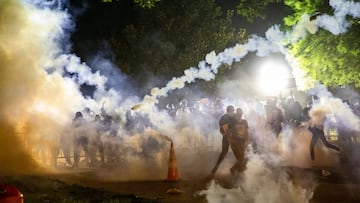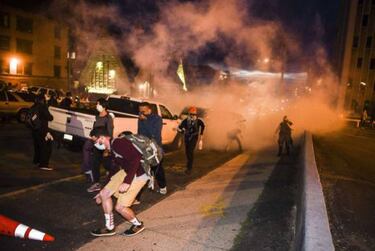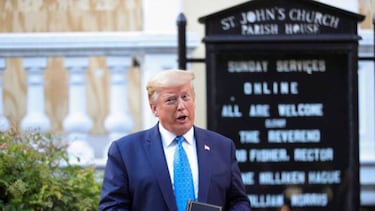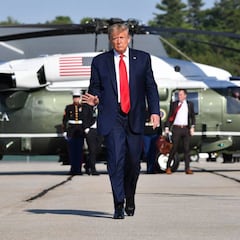Why is tear gas banned in war but not from George Floyd protests?
Despite being listed as a chemical agent prohibited on the battlefield by international law, US security forces are allowed to fire CS gas at civilian protestors.

Scenes of US citizens being tear-gassed by law enforcement officers and military personnel during Black Lives Matter protests linked to the death of George Floyd in Minneapolis on 25 May have caused outrage around the world and led many people to question why something that is not permitted in warfare is being legally deployed against unarmed civilians in cities from Washington to New York to Los Angeles to quell what have been largely peaceful demonstrations against police brutality towards African-Americans.

The answer lies in an omission to the Chemical Weapons Convention of 1997, the first multilateral, international disarmament agreement concerning the use of chemical weapons on the battlefield, which would be overseen by the Organisation for the Prohibition of Chemical Weapons (OPCW).
The CWC has scarcely been a resounding success – the OPCW has issued reports on the use of chlorine, mustard gas, sarin and hexamine during the Syrian Civil War. But these attacks using prohibited substances drew sharp criticism from the international community and the United States was among a coalition including the UK and France that launched a military response to the Douma chemical attack on 7 April 2018. The US had previously acted against the Syrian government airbase at Shayrat after the Khan Shaykhun chemical attack on 4 April 2017. However, on its own soil, the use of riot control agents such as chloroacetophenone (Phenacyl chloride) and chlorobenzylidene malononitrile (CS gas) is perfectly legal in the US.
- Derek Chauvin charged with murder and manslaughter
- George Floyd Obituary: how to sign the guestbook
- Where does Trump's 'when the looting starts...' quote come from?
- George Floyd killing: the four police officers
- George Floyd protests
- How a suspected counterfeit $20 bill led to protests across the US
- When did #BlackLivesMatter start?
Trump: "They didn't use tear gas"

Many experts concur that omitting the use of these substances, as seen when protestors were dispersed in Washington D.C. during Donald Trump’s visit to St. John’s Church near the White House last Monday, was an oversight on the part of the OPCW. While not designed to cause serious injury, riot control agents can lead to burns, rashes and respiratory issues.
After his visit to St. John’s, Trump denied riot control agents had been used against protestors. “They didn’t use tear gas,” the US president told Fox News. However, several US news sources reported that tear gas canisters had been found in the immediate vicinity. Images also clearly showed protestors with watering eyes and security forces deploying gas, flash grenades and rubber bullets.
Related stories
Earlier on the same day (1 June), while in the White House bunker, Trump held a conference call with the more than 30 governors experiencing looting and violent protests over Floyd’s death this past weekend and called them “weak”.
"You have to dominate. If you don't dominate, you're wasting your time, they're gonna run over you, you're gonna look like a bunch of jerks,” were Trump's according to an audio of the call obtained by NBC News.

